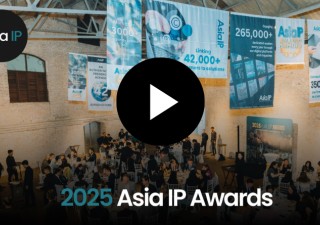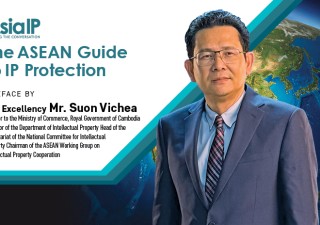Vietnam: Practical insights in inbound technology transfer
30 November 2020
 Vietnam’s technology market has become more vibrant since the introduction of the Technology Transfer Law 2017. Yen Vu, Trung Tran and Bao Nguyen provide investors and companies with important notes on the practical issues facing parties engaging in inbound technology transfer.
Vietnam’s technology market has become more vibrant since the introduction of the Technology Transfer Law 2017. Yen Vu, Trung Tran and Bao Nguyen provide investors and companies with important notes on the practical issues facing parties engaging in inbound technology transfer.
Vietnam’s technology market has become more vibrant since the introduction of the Technology Transfer Law 2017. The new law is aimed at encouraging transfer of advanced and clean technologies and eliminating importation of outdated and hazardous technologies. More state intervention in reviewing technology subject to the transfer has therefore been adopted; the registration and approval process of technology transfer has been streamlined. For successful inbound transfer of technologies in Vietnam, the parties should be mindful about not only commercial aspects but also legal compliance in the transfer.
Practical issues that parties engaging in inbound technology transfer in Vietnam should note include, among other things, determining whether the types of technologies to be transferred are regarded as restricted or prohibited technologies, drafting the technology transfer contract in accordance with the law, consolidating documents for timely registration and designing the timeline for implementation of the transferred technology. This article provides investors and companies with important notes consolidated by lawyers from their practice of technology transfer consultancy on the aforementioned issues.
Technologies encouraged for transfer
The Technology Transfer Law 2017 categorizes technologies into three types, i.e., encouraged, restricted and prohibited technologies. Encouraged technologies are those regarded as novel and/or advanced technologies, e.g., clean technologies that are suitable to the socioeconomic conditions of Vietnam, technologies that can generate or use new or renewable energy or store energy in highly efficient ways, medical machinery/equipment and pharmaceutical products serving medical diagnosis and treatment, protection of human health and improve the physical strength for Vietnamese people, etc. The detailed list of technologies encouraged to transfer is set out in Annex 1 of Decree 76/2018/ND-CP dated 15 May 2018 guiding Technology Transfer Law 2017 (Decree 76).
Although the Technology Transfer Law 2017 provides that organizations or individuals making transfer of encouraged technologies will enjoy tax incentives (Article 39.4), there have not yet been any regulations implemented elaborating and guiding on the application of such incentives. In practice, each province across Vietnam has designed a specific plan to stimulate and support the transfer of the encouraged technologies. For instance, Tra Vinh province provides for a support of 30 percent of the cost incurred for purchasing machinery used for technologies encouraged to transfer under the Technology Transfer Law (Resolution No. 82/2019/NQ-HDND dated April 12, 2019, of the People’s Council of Tra Vinh province.) Meanwhile, Thanh Hoa province provides for a support of 30 percent of the cost incurred for making new software under the condition that organizations receiving such support shall replace the outdated technologies with the advanced technologies and those encouraged to transfer under the Technology Transfer Law (Resolution No. 81/2017/NQ-HDND dated December 7, 2017, of the People’s Council of Thanh Hoa province.)
The new Law on Investment 2020 specifies projects involving transfer of technologies encouraged to transfer among those that enjoy investment incentives. Forms of incentives may include corporate income tax incentives, import tax exemption, exemption from or reduction of land levy and land rents, accelerated depreciation and increased deductible expenses upon calculation of taxable incomes. This provision needs further guidance by the government for implementation.
Technologies restricted and prohibited from transfer
Restricted technologies are those that are no longer popular or can be considered quite hazardous to the environment, but are still in the acceptable range under the national technical standards of Vietnam, such as technologies that use toxic chemicals, generate hazardous waste, or use/create radioactive substances, but are still in conformity with national standards and regulations, etc. The detailed list of technologies restricted from transfer is prescribed in Annex 2 of Decree 76.
Prohibited technologies are those that are outdated and hazardous to humans and the environment outside of the acceptable range of the national standards of Vietnam, such as technologies that use toxic chemicals or generate wastes, or use or create radioactive substances that do not satisfy the national technical standards and regulations. The detailed list of technologies prohibited from transfer is prescribed in Annex 3 of Decree 76. Apart from the outdated technologies, technologies that are state secrets under Vietnamese laws are also subject to prohibition. In practice, the lists of state secrets are scattered in many legal documents issued by different government agencies in charge of different sectors, and are being updated and/or replaced due to the issuance of the new Law on Sate Secret Protection 2018, which came into effect on July 1, 2020.
In addition to the above-mentioned restricted and prohibited technologies under Vietnamese laws, Annexes 1 and 2 of Decree 76 also mention that the restriction and prohibition can extend to the technologies that are provided in any international treaties in which Vietnam is a member. Nonetheless, neither the Technology Transfer Law 2017 nor Decree 76 lists out any international treaties covering such restricted and prohibited technologies.
In practice, there are no specific international treaties that Vietnam is a member of which prescribe in detail technologies restricted or prohibited to transfer. As such, in order to decide whether certain technologies to be transferred are restricted or prohibited, it is important to understand the nature, functions, products and by-products of such technologies. It is essential to consider crucial elements, e.g., whether the technologies in question can generate any effects that are considered harmful to human health or the environment. For example, if the technologies in question can create organic byproducts, the parties to the transfer agreement might want to refer to the Stockholm Convention on Persistent Organic Pollutants 2011, apart from Vietnamese laws, for details on what type of organic substances are deemed to be pollutant and can therefore be prohibited from transfer.
Registration of technology transfer agreements
Under the Technology Transfer Law 2017, agreements on inbound/outward technology transfer to/from Vietnam must be registered with the competent state authority. Failure to register results in invalidity of the agreement. The mandatory registration of technology transfer agreements is legislatively aimed at controlling the flow of obsolete technologies transferred to Vietnam and the act of transfer pricing in technology transfer. For successful compliance with the registration rules, businesses should be mindful of the following key issues:
Registration deadline: The application dossier must be submitted within 90 days from the singing date of the technology transfer agreement. Meeting this deadline is not always straightforward, since the dossier involves many required documents subject to a variety of formalities (e.g., notarization and legalization). In complicated cases which involve more than two parties and/or require careful analysis of the technologies and/or patents in questions, it may take the parties months to put together the application documents. Therefore, it is advisable that businesses note carefully the deadlines for registration/application to consolidate necessary documents as soon as the agreement is signed for timely submission.
Mandatory contents of technology transfer agreements: Beside the registration requirement, the Technology Transfer Law 2017 also involves state intervention in contract terms. Article 23 of the law sets out 14 contents that a technology transfer agreement must have, including:
- Name of the technology to be transferred;
- Technologies to be transferred, products created by the transferred technology and their quality standards;
- Transfer of the ownership and/or the right to use technology;
- Method of technology transfer;
- Rights and obligations of the parties;
- Price and method of payment;
- Duration and effective date of the technology transfer agreement;
- Definitions and terms used in the technology transfer agreement (if any);
- Technology transfer plan or schedule, and location; and
- Warranty on transferred technology.
Absence of any of such contents may result in office refusal. In addition, the registry will raise shortcomings of the agreement if the contents do not meet the formality requirements in their course of examination. From technology lawyers’ experience, some contract shortcomings commonly raised by the registry include:
- Effective date: The Technology Transfer law provides that a technology transfer agreement subject to the registration requirement becomes effective as of the date of issuance of the technology transfer registration certificate. Accordingly, many agreements that prescribe an effective date other than such date (e.g., agreements commonly define “effective date” as the date on which the agreement is signed) have been rejected.
- Term of agreement: Agreements usually provide that the technology transfer continues in force indefinitely. The registry in many cases does not accept an indefinite term for the agreement in Vietnam. In such cases, the technology transfer is considered as part of an investment project. According to Vietnam’s Investment Law, investment project activities, including technology transfer, will be terminated upon the expiration of the project term.
- Technology transfer price: The total value of an agreement, which is determined based on the transfer price is necessary for calculation of the examination fee, so the registry usually requires the agreement to provide a specific amount of price. However, the transfer price in most cases is royalty-based, i.e. the license fee is not settled in one go, but calculated based on the amount, revenue, or earnings from selling of the products manufactured with the use of the transferred technology. In such approach, the transfer price is not clear enough for the registry to calculate the examination fee.
In any case of contract shortcomings, the applicant may need to submit their clarification or amend the contract to avoid a possible refusal by the registry.
Registration procedure: The procedures for registering a technology transfer agreement are stipulated in the Technology Transfer Law 2017 and Decree 76. However, in case the technologies to be transferred are considered restricted technologies, the parties have to apply for license to transfer technologies, of which process shall be more complicated and time consuming. Vietnamese laws have not provided for any mechanism where the submitted dossier for registration of technology transfer agreement could be converted to dossier to apply for license for technology transfer in case the technology in question is deemed to be restricted during the process of examination. Therefore, it is necessary for foreign investors to carefully consider all aspects of the technology subject to transfer or consult a local technology expert for assessment of technologies before making the technology transfer transactions into Vietnam to avoid prolonged procedure in applying for registration or license to transfer.
Timing for implementation of transferred technology
A common practice follows that parties implement the technology transfer, e.g., by providing documents, trainings and technical assistance, as soon as the agreement is established. However, in the case of inbound technology transfer where registration is required, the technology can only be transferred upon the grant of the registration certificate. Otherwise, the implementation will constitute “making inbound technology transfer from overseas to Vietnam without a technology transfer registration certificate.” This act results in administrative fines at the ranges of D30 to 40 million (US$1,300 to US$1,700) and seizure of materials and means related to the transferred technology (Article 25, Decree 51/2019/ND-CP prescribing Administrative Fines for Violations Arising from Scientific and Technological Activities, and Technology Transfer, issued by the Government on June 13, 2019.)








